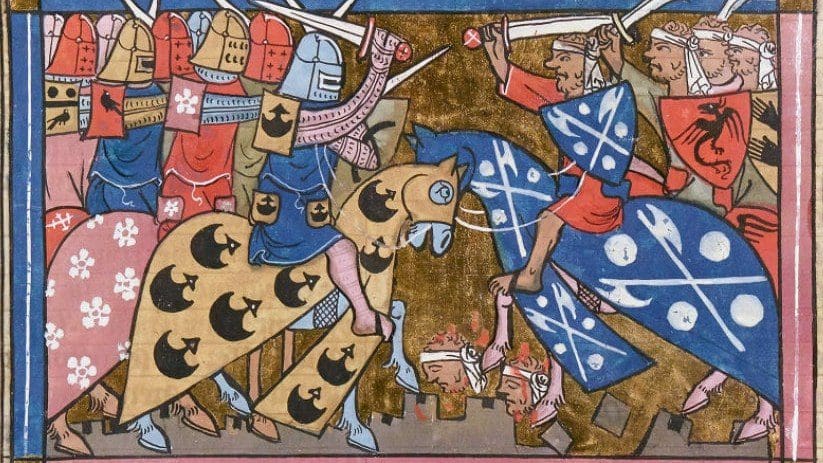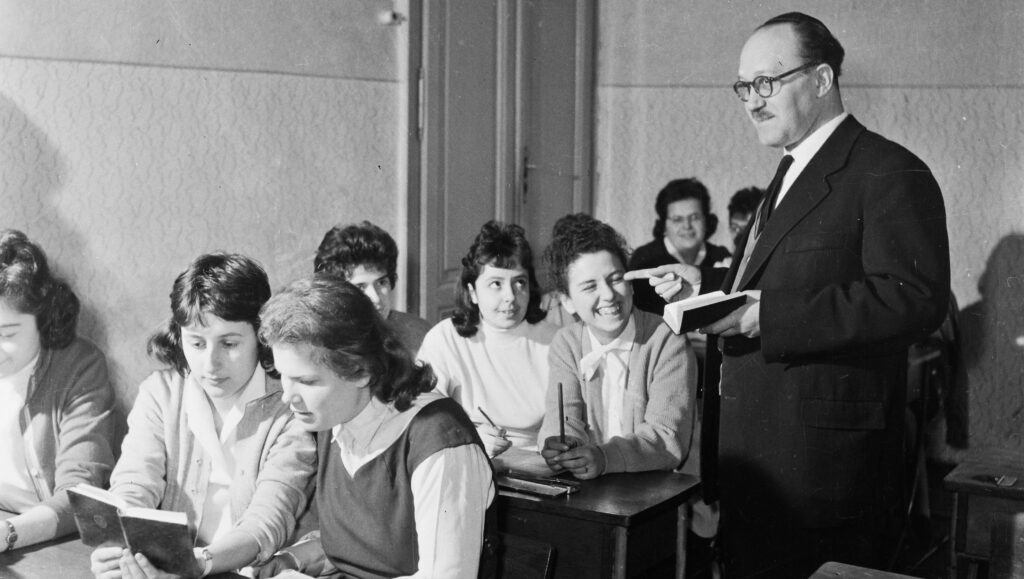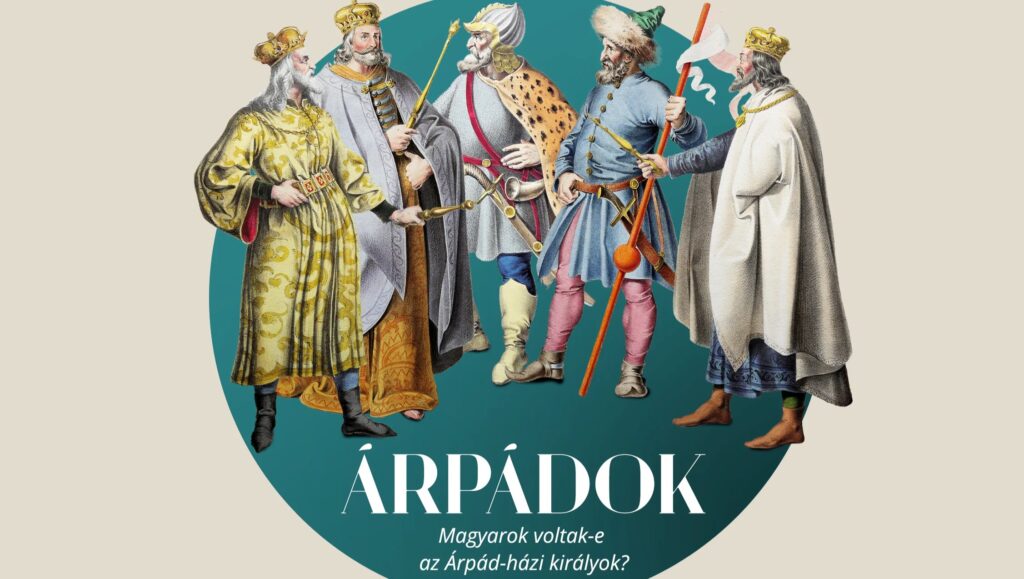The idea pops up from time to time that several of the Hungarian participants of the Fifth Crusade in 1217 led by Hungarian King Andrew II (r. 1205–1235) stayed in the Holy Land, and their descendants have also preserved this tradition belief to this day.[1] However, this is quite unlikely. It is true that at the call of the Council of Clermont—unknown in its original wording—from 1096 on thousands left for the East, to be followed by tens of thousands more later. It is certain, however, that the majority of them—if they survived at all—returned to Europe after a few months or at most a year or two.
Out of the army of tens of thousands of the First Crusade, research has identified only 787 people by name, of whom 104 can be confirmed to have stayed in the East, but fifteen of them only for a few years. Of the 89 who settled permanently, 21 were clerics, who were certainly fuelled by religious enthusiasm.
Of course, life in the East was not at all easy for the newcomers, as
they had to preserve their traditions while developing their identity in a completely new social and religious environment.
As historian Fulcher de Chartres (died c. 1127) shed light on the process with his much-quoted sentence: ‘For we who were Occidentals now have been made Orientals. He who was a Roman or a Frank is now a Galilaean, or an inhabitant of Palestine. One who was a citizen of Rheims or of Chartres now has been made a citizen of Tyre or of Antioch.’[2] No matter how large the number of Westerners arrived was, they belonged to the minority in their new territory of non-Christians, but they might have been just as concerned by the presence of a large number of Orthodox and Eastern Christians and the cavalcade of European and Eastern languages, too.
In the societies of the Holy Land, various forms of separation, mixing, and integration could be observed. In the cities, the practice of separating people by allocating to them different city districts was particularly effective in dealing with linguistic, religious, commercial, and legal status contradictions and tensions. The right of the first reservation was recognised, which is how a southern French, Provençal quarter came into existence in the area occupied by Count Raymond of Saint-Gilles in Jerusalem. In other cities, such as Akko, Jews, for example, could only settle in a designated suburban area with the other non-Latin settlers.
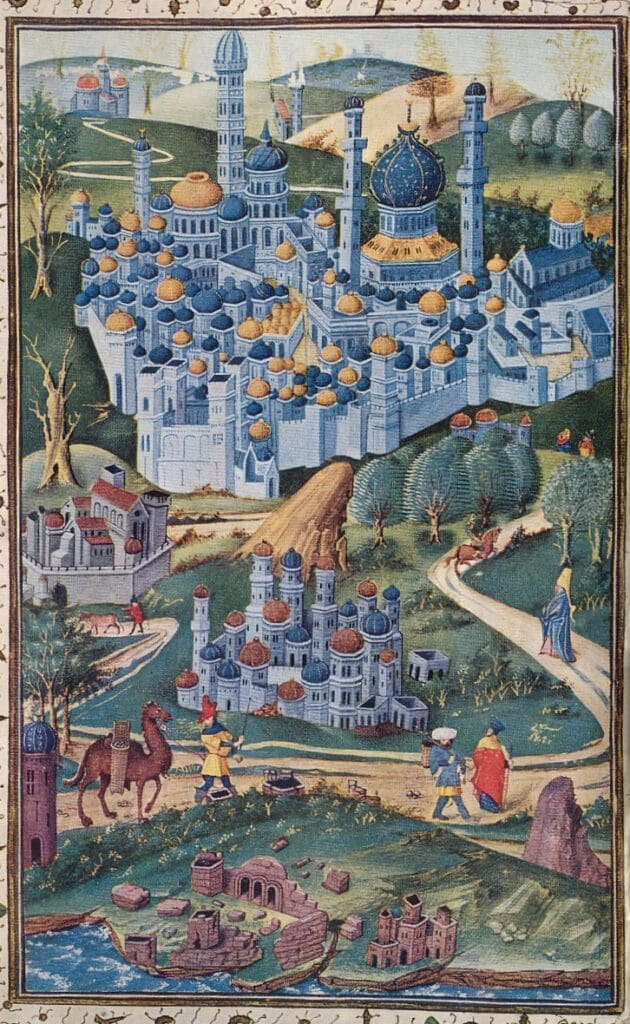
Cities, especially coastal ports and trading cities have always played a decisive role in the lives of settlers. After the First Crusade, most towns became deserted, partly as a result of the destruction and sometimes even massacre that followed the sieges, and partly as a result of people of other religions fleeing or being forcibly expelled. Where the capture of a city was followed by bloodshed, as in Haifa (1100), Caesarea (1101), and Beirut (1110), the new settlers had more space as well—in the case of Ramla and Tiberias, however, local citizens fled already before the arrival of the Franks. At the same time, in places where Muslim rule ended after a peaceful surrender, the local population could remain in greater numbers, such as in Nablus and Sidon in 1099. In Tyre, for example, the Muslims could decide for themselves whether to stay or leave. Regarding the number of local Muslims, experts can only rely on estimates; the Kingdom of Jerusalem had an estimated urban, mainly Frankish population of 100–120 thousand and a rural population of 300–360 thousand, of whom perhaps 250 thousand were Muslims.
The settlement of Muslims and Jews was not tolerated in Jerusalem, although Jewish and even Muslim pilgrims were allowed to enter. In other, later occupied cities, such as Tyre, the local community of Jews could certainly have remained, and there are even reports of mosques operating there from 1184. It was only King Baldwin I who invited Syrian settlers to the empty Jewish quarter in Jerusalem for the first time, who created a Syrian quarter of their own. At the same time,
the Muslim occupation of Jerusalem in 1187 marked a favourable turn for the Jews as well,
as Jewish pilgrims could arrive from the Middle East and Europe—sources from that time report the arrival of 300 families from French territory around 1210. Besides, Orthodox Christian pilgrims were also constantly arriving, for whom St Sava, the son of Stefan Nemanja, the Grand Prince of the Serbian Grand Principality, acquired and endowed the St George’s Monastery near Jerusalem. In the 13th century, an eyewitness explicitly recorded the religious, linguistic, and ethnic diversity of the city of Akko, as well as the balance of forces: in the cities, there were ‘Greeks and Syrians, Jews and Jacobites, who follow their own laws, and the Franks and Latins rule over the rest’. The fact that the Eastern Christians were eager to choose Frankish names for themselves made the separation and mixing even more colourful, although garments and hairstyles set strict limits on their acquaintance: the locals wore beards, while the Franks were clean-shaven. However, this could also cause misunderstandings, as it sometimes occurred that some of the bearded Eastern Christians were mistaken for Muslims by the newly arrived crusaders and thus killed, proving the great cultural differences between the long-settled and the newly arrived crusaders. On the other hand, the intermarriage of the Franks with the locals once again promoted rapprochement. This can easily be explained: immigration primarily attracted men. At the time of the First Crusade, we only know of seven army wives. While the number of females in the Holy Land increased later, but still, due to the small proportion of Franks in the countryside, the chances of finding a partner of similar origin were small, and the most likely marriage prospects were Eastern Christians or baptised Muslim women. Fulcher de Chartres, the aforementioned historian, recorded mixed marriages as a fact around 1120, even though it was in 1120 that the Council of Nablus decided to severely sanction sexual relations between Franks and Muslims.
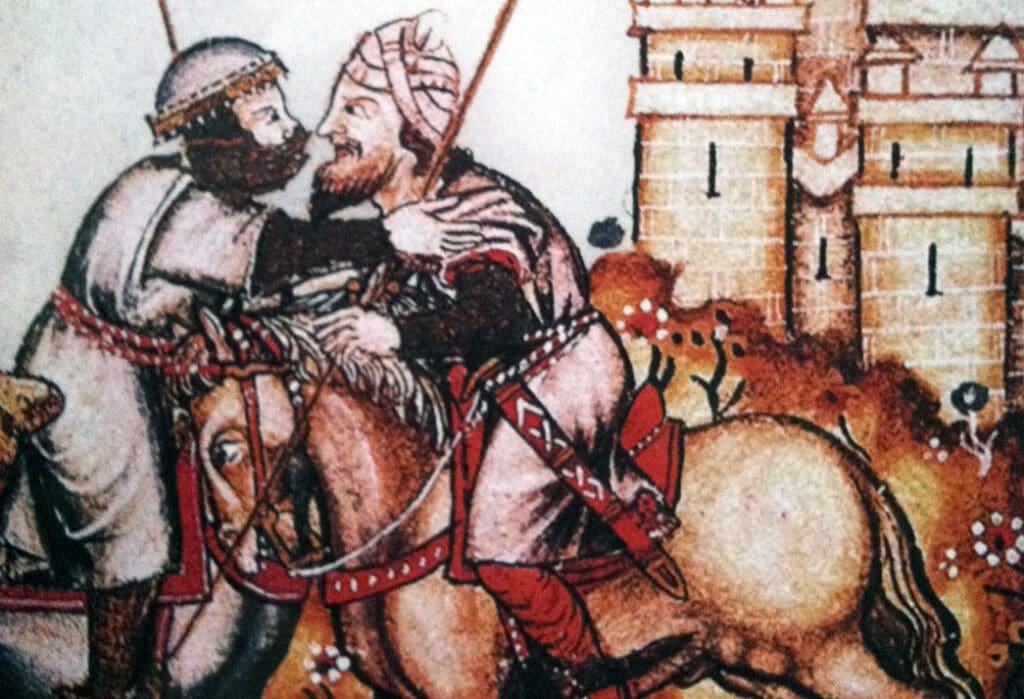
The locally born Franks, who were derogatorily called ‘foals’ and ‘half-bloods’, already had a small, limited knowledge of Arabic, thus many Arabic words were mixed into the spoken French language. Their different traditions were immediately apparent to the newly arrived Westerners: local influences in gastronomy, decorative arts, and bath culture easily found their way to Westerners, but at the same time, it would be misleading to think of a quick rapprochement and merger. In the same way, the influence of Eastern masters also enriched Western material culture in important areas: just think of the Venetian glass industry or the employment of Eastern crossbow makers in the West. German chronicler Arnold von Lübeck, for instance, considered the adoption of homing pigeons to be one of the most important results of coexistence for the Franks.[3]
In addition, Cyprus occupied a special place in the East Frankish world. From the moment it was occupied by the English King Richard I the Lionheart, it became the most important supply base of the crusader states. On the island, only Latin Christians could have fiefdoms. The Greeks, similarly to the Jews and Armenians, could live according to their own legal customs, and although the Cyprian Orthodox Church officially submitted to Rome, this did not remarkably improve their being regarded as heretics in daily practice. The career opportunities of the locals remained limited, and it was only from the 14th century one could hear of Greeks or Syrians becoming knights—it is true, though, that the first such knights were baptised as well. The local Greek language was also enriched with French words and transformed into a specific local tongue, which the educated Greeks, however, considered barbaric. The walls of separation only continued to crack by the 15th century but did not completely disappear yet.
If today’s migration crises are surrounded by serious political and ideological debates, it is no surprise that the medieval crusader states were also characterised by contrary approaches.[4] In the 19th century, historians suggested a somewhat idealised picture of a peacefully unifying Franko-Syrian society. In the 1950s and 1960s, however, this image was replaced by a more critical interpretation describing a segregated society in the works of eminent scholars such as R. C. Smail and especially Joshua Prawer (1917–1990), who was of Polish origin and lived in Palestine since 1936. The latter was the first among modern researchers to examine society as a whole, breaking with earlier dynastic and elite-centred approaches. Considering the prospects of the modern Jewish state from the 1960s, he came to the conclusion that the reason for the failure of the crusader societies was to be found in the inadequate number of settlements and in the colonialist mentality that neglected the integration of the countryside.
In modern literature, Jonathan Riley-Smith or Joshua Prawer’s former student, Benjamin Z. Kedar, rather emphasise that rapprochement was not hopeless and that the common religious tradition might have initiated a kind of social cohesion. They also indicate that the horizontal relations between the communities were much stronger and more structured than previously assumed. Moreover, according to Kedar, the Nablus laws of 1120, which strictly regulated garments and marital-sexual behaviour, were only created as a result of a crisis situation, and in fact, they did not enter into force in this form, nor were they included in the Jerusalem laws. In addition,
the acceptance of the results of Arab science may have also indicated a deeper and more comprehensive nature of relations.
The Frankish administrative system inherited and adopted many things from the earlier Fatimid era, and was by no means hostile to the local society. Many small proofs of this can be discovered in the area of the free exercise of religion, or the authorisation of pilgrimages and the renovation of holy places. Israeli historian Ronnie Ellenblum went even further when he took into account a much more extensive Frank presence and influence outside the cities, and completely rejected the simplistic view of the settlement of the Westerners, such as the Franks, in urban ghettos as earlier suggested by Prawer. Although this process was nullified by the Muslim conquest of the Holy Land in the 1290s, it continued elsewhere, for example in Cyprus, for almost three more centuries. With that knowledge, one of the leading historians of Byzantium and the Mediterranean world, David Jacoby, would have not used the word ‘acculturation’ for these social processes, but would rather have talked about the encounters between civilisations. Eventually, the cultural rapprochement and ethnic mixing of the Western and Eastern peoples that began with the Crusades were stopped by the Ottoman conquest, so the world will never know what the outcome could have been.
[1] https://www.atv.hu/belfold/20170518/egy-rakas-lajost-talaltak-egy-izraeli-faluban, accessed 28 January 2023.
[2] Rudolf Hiestand, ‘“Nam qui fuimus Occidentales, nunc facti sumus Orientales.” Siedlung und Siedleridentität in den Kreuzfahrerstaaten’, in Christof Dipper, Rudolf Hiestand (eds.), Siedler-Identität. Neun Fallstudien von der Antike bis zur Gegenwart, Frankfurt a. M., 1995, pp. 61–80.
[3] David Jacoby, ‘Cross-Cultural Transfers of Industrial Technologies in the Later Middle Ages: Incentives, Promoters and Agents’, in Georg Christ, Franz-Julius Morche, et al. (eds.), Union in Separation Diasporic Groups and Identities in the Eastern Mediterranean (1100–1800), Roma, 2015, pp. 487–504.
[4] Christopher Tyerman, ‘The Debate on the Crusades, 1099-2010’, Issues in historiography, Manchester, 2011, pp. 170–181.

